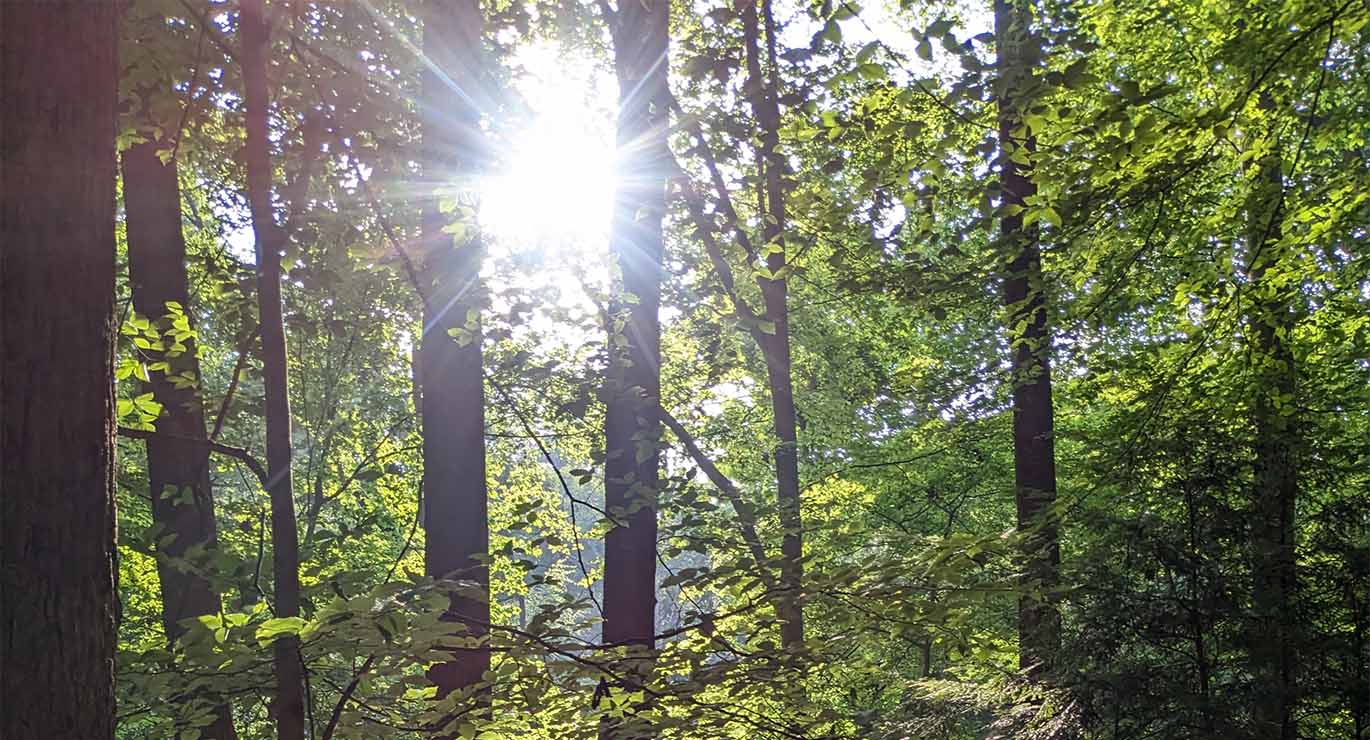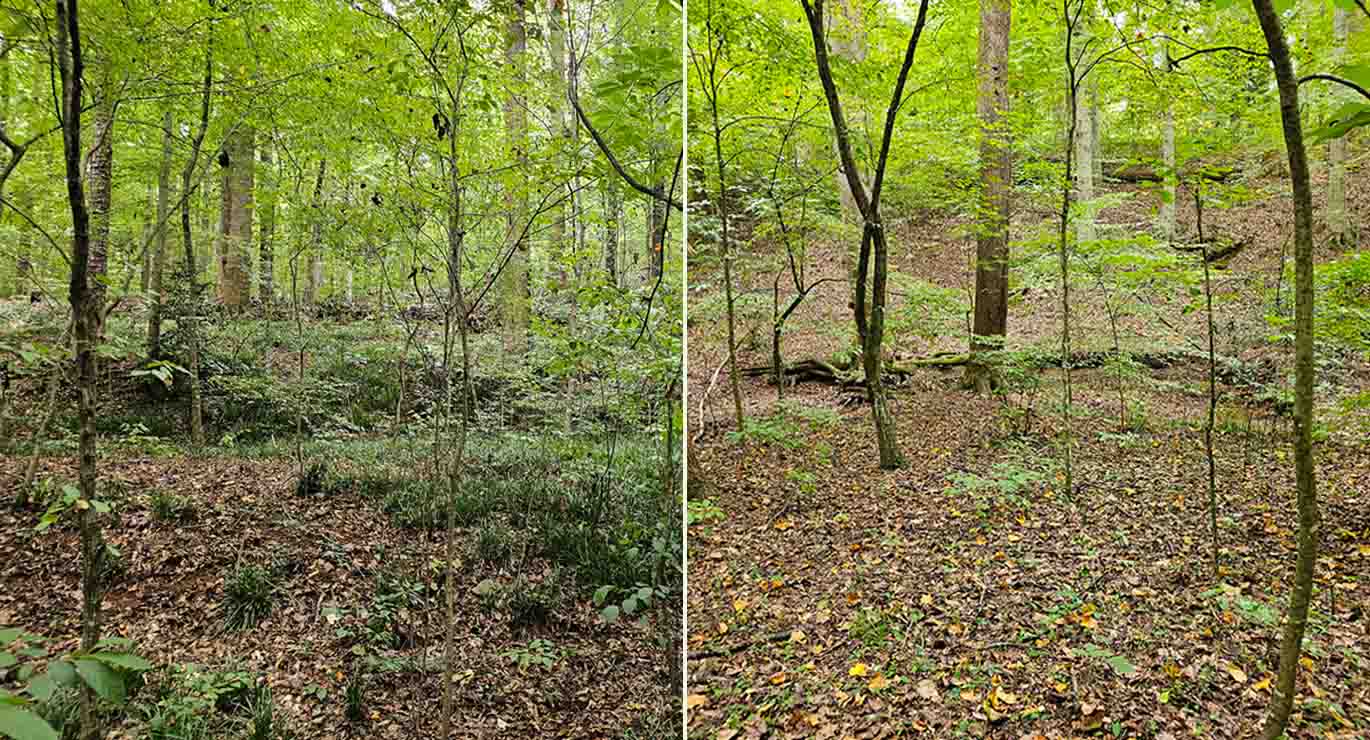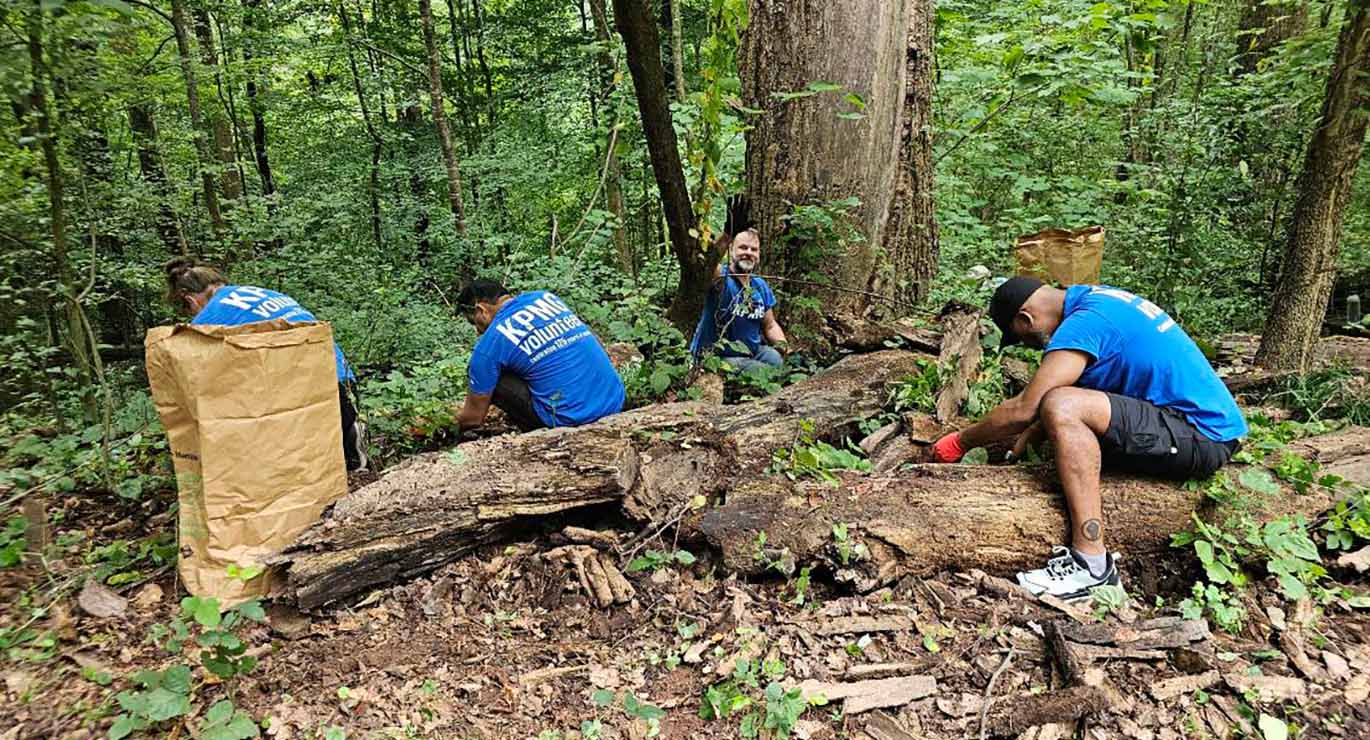September 23, 2024
How Forest Restoration Impacts WildWoods and Fernbank Forest



In the picture above: to the left is an example of before restoration and to the right is an example of after restoration.
Corporate and individual volunteers play a critical role in Fernbank’s restoration efforts in Fernbank Forest and WildWoods. In fact, in 2024 alone, volunteers have contributed 2,275 hours. We have a recurring volunteer day the second Saturday of every month and schedule groups throughout each week. We would not be able to accomplish all of our goals without the help of our volunteers.
More information about Fernbank Forest can be found here.
Many NNIS* have been introduced, which then spread across cities, states and entire regions. For example, kudzu was brought into the US from Asia and planted as a means of erosion control. However, it worked too well and has taken over native plants in a large portion of the southeastern United States. English ivy, liriope and chaff flower are just a few of the plants that we are working on removing in Fernbank Forest and throughout our campus. This gives the native seeds in the soil a chance to grow and reestablish a diverse ecosystem.
Fernbank has been engaged in ongoing forest restoration projects since 2012, supported by staff, volunteers and a variety of restoration organizations like EcoLogic, WoodsKeeper, ReForest ATL, Deep Forest Field School and Trees Atlanta. The restoration of Fernbank Forest is also beneficial to our neighbors and surrounding community. By removing NNIS*, native plants are able to thrive, creating a haven for local wildlife and increasing our local biodiversity. For example, native passionflower grows in Fernbank Forest and it is the only host plant for the gulf fritillary butterfly. This means the caterpillars are looking for these leaves to eat before forming their cocoons. If you are thinking about adding one native plant to your garden, native passionflowers are an excellent choice!

Some of our favorite native plants can be found in our Museum Blog post here: 5 native plants for home landscaping.
If you’d like to become a restoration volunteer, please contact the Forest Manager at Forest@FernbankMuseum.org. Information about our volunteer program is available here.
*NNIS = Non-native invasive species









